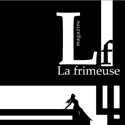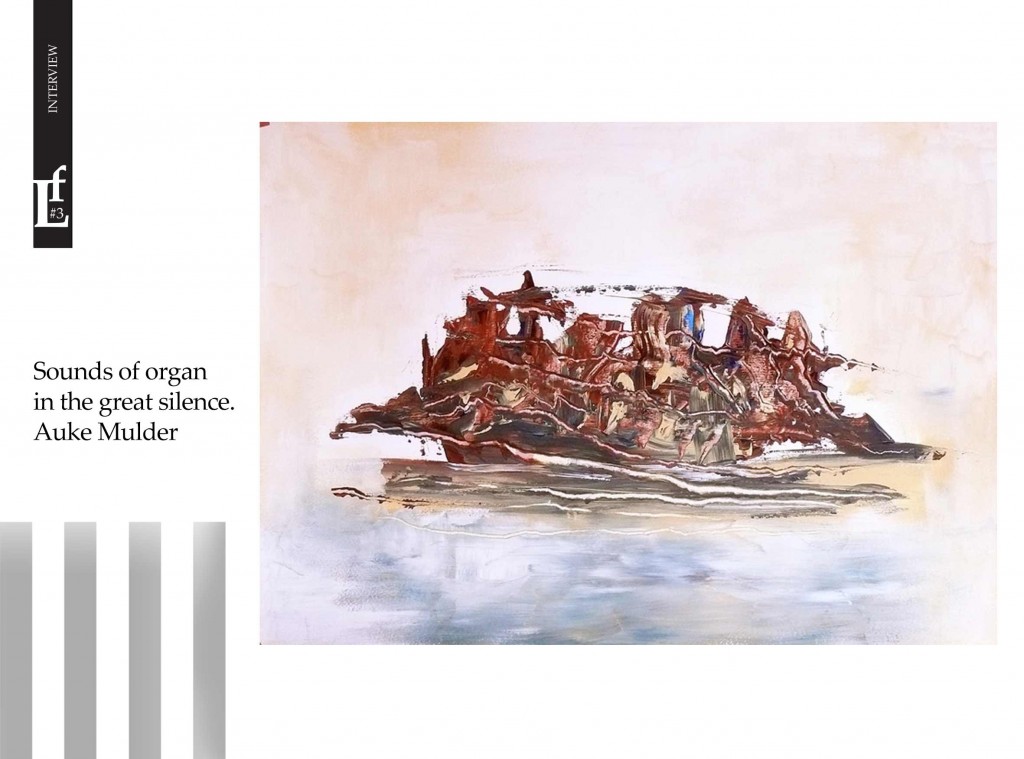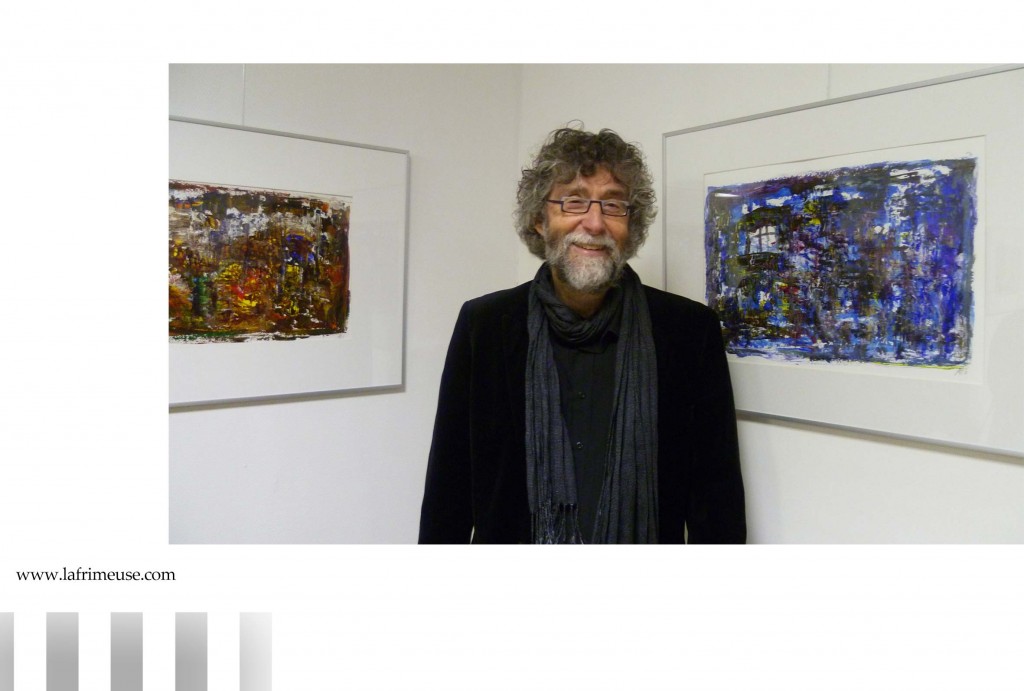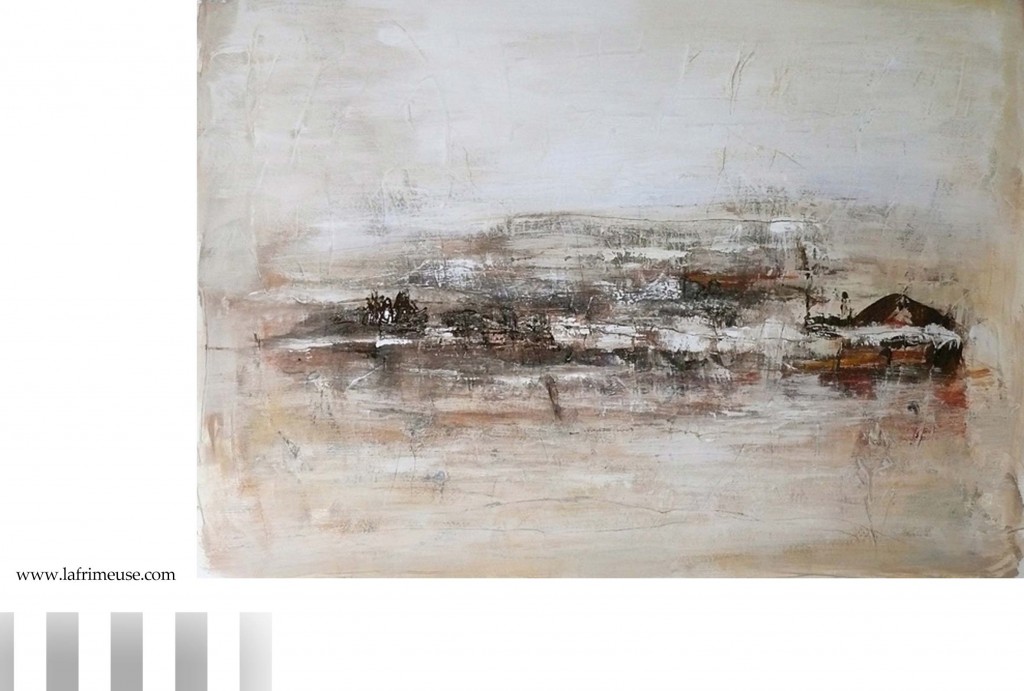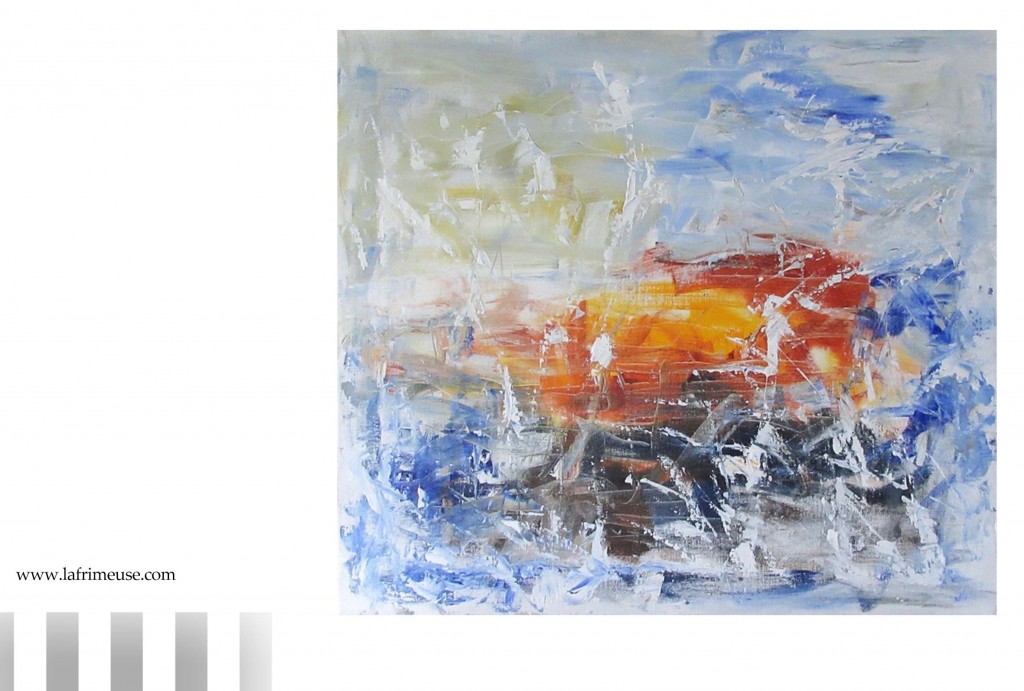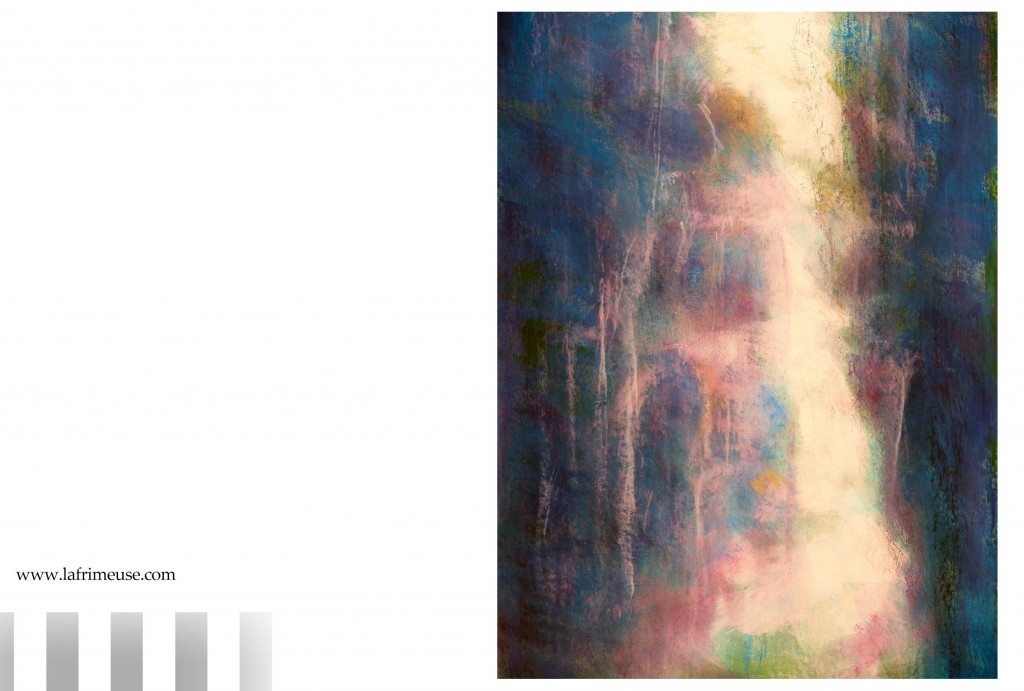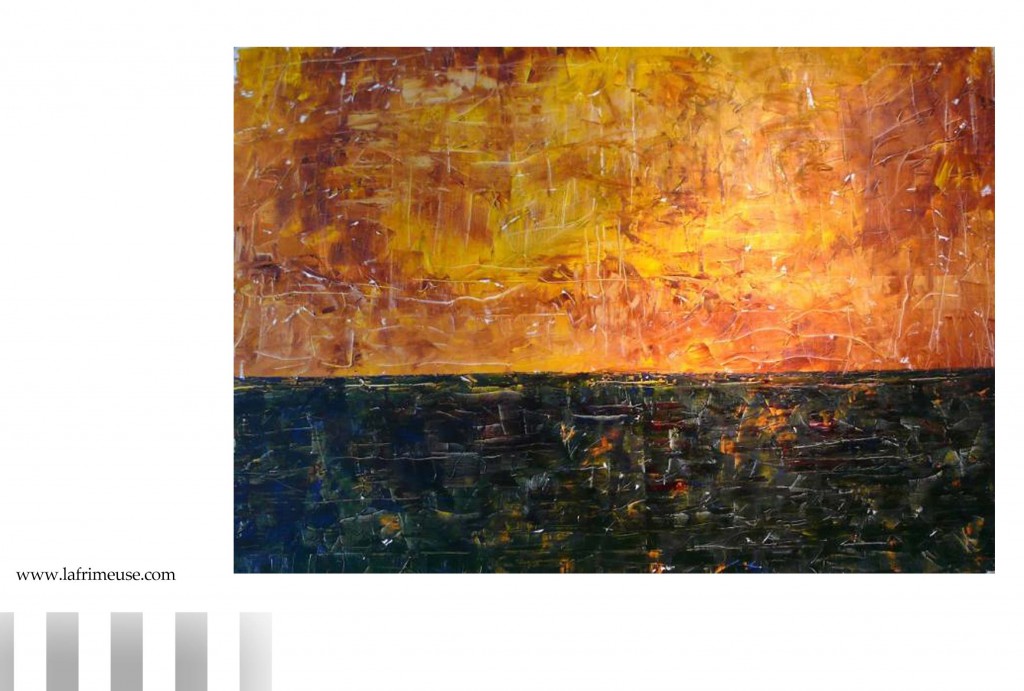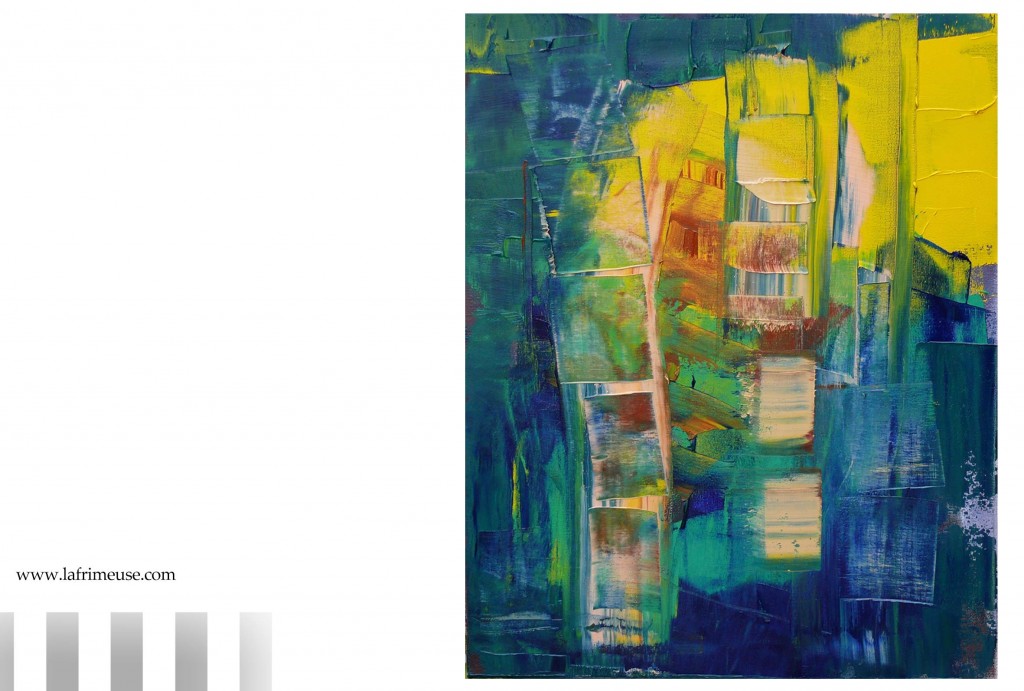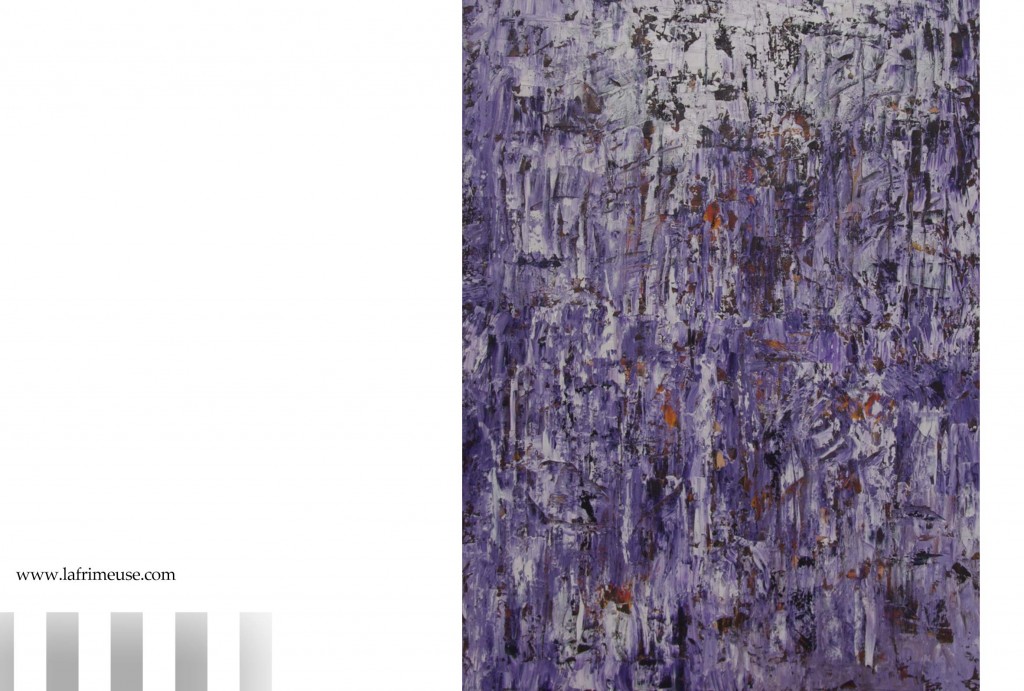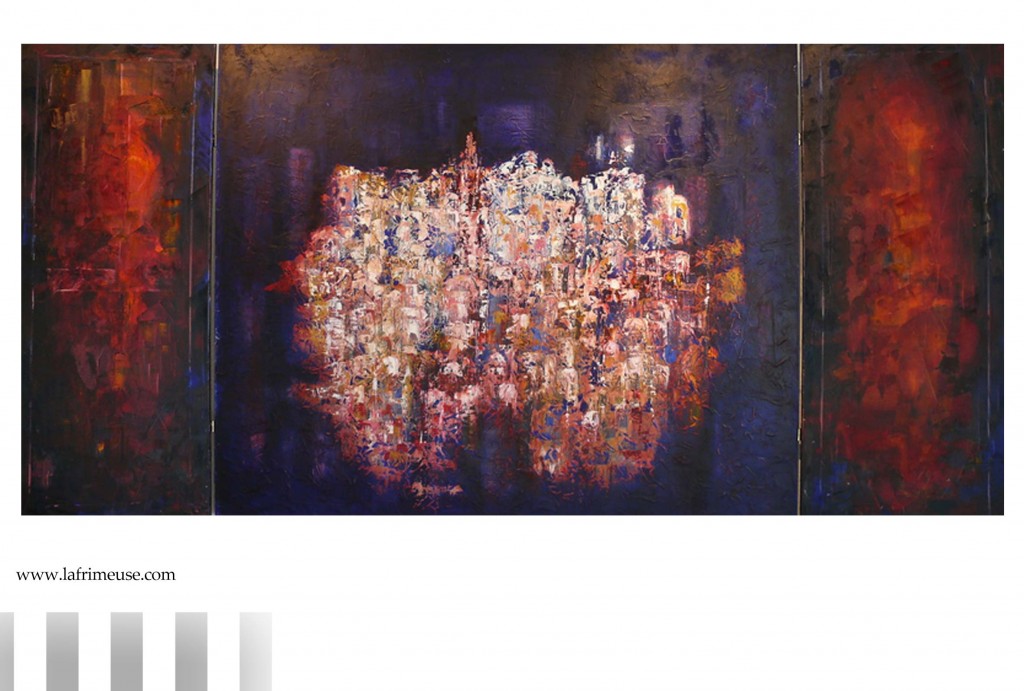Could anyone catch elusive things? Is it possible to hear the sounds of silence?
And whether might we wander through the crannies of our subconscious for searching answers, who we are and why we are here?
Perhaps we should not look for the obviousness, and there is necessary to awaken your imagination and feel anything more profound and faraway, but at the same time it is so close and clear.
As the sounds of the organ, magic and powerful instrument that gives us a sense of upliftment and maintenance of vanity like mist in the mountains creates an illusion of our floating above the ground , and as the horizon bar after every our approach moves away again and so artworks of Auke Mulder takes us to the depth of our essence.
When the artist himself reveals his philosophy of art, the process of perceiving becomes more unique and filled.
The passion for the art of the Dutch painter Auke Mulder carries a lifetime, through science, philosophy and theology. The more interesting will hear from him the story about himself and own concept of his art.
The passion for the art of the Dutch painter Auke Mulder carries a lifetime, through science, philosophy and theology. The more interesting will hear from him the story about himself and own concept of his art.
And first of all, how have you come to your art? You have MA Theology, philosophy and history of Christian Art. Whether was this passion to art from young years or it was your deliberate choice that you had made later?
Language creates a world that perhaps did not exist before and music sounds the yet-unheard perceptible, but it is the art of painting in particular that transforms what is invisible and inaudible into vivid colours. This for me is like music in colour and form. This fascination stems from my youth. I lived near the sea in Friesland, a province in the north of Holland. And overlooking the sea, I would dream my own world, an unparalleled landscape, in which I could almost touch the horizon with my hand. The sharpness of view faded into abstract fields of colour at the sounds of the whispering surf. I experienced that colour as music, as organ music in particular. Since my childhood I have learned to play the organ and that passion has not faded. Harmonium, reed organ and harpsichord are instruments I like to play. Initially as an autodidact I painted whatever attracted me and in that way I developed my abstract perception of nature.
Mystical island, 2016
Only after many years of study at various art academies and research in theology, philosophy and art history I have developed into who I am now. About 25 years ago I made the definitive transition from scientific practice to professional artistic practice. That seems like a significant transition, but in practice the differences are not so pronounced and one complements the other. What I searched for during my studies was how reality comes into being and how this is affected by emotion. This is not fundamentally different from what I search for in art, in painting. I have discovered that this is my concept since my early childhood.
Autumn-Winter Tronsvangen Alvdal
The specific combination of colors, forms and your expressive manner made your artworks with something of particular where everyone could find own emotional world. Could you describe the philosophy of your creativity in several words?
I am searching for the relationship between imagination and reality and for the origin of human longing. Everyone knows what it means to be longing and that it is never to be completely accomplished. Longing is not identical to desire, it is deeper, more existential. Desire has to do with ‘possessing, or owning’, but longing has to do with ‘being’ and to look for fulfilment. Fulfilment of humanity, of being-human in the world, and that will never be complete. Longing is something like farness. You are reaching for it, but it will never get closer, farness does not get near. Every step towards the horizon will make it move away. The mystery of farness will not be resolved and remains forever. Farness is in my experience that which is not here, neither there, unless it indicates direction for thinking. This can be forwards or backwards, horizon stretches in each direction.
Landscape, 2015
Farness, like longing, may be approachable (sometimes it seems as if you can touch it), but it is not reachable. Longing also, in this vision, will never be fulfilled, but is more like a starting point (source or goal) for action, for giving meaning to and shaping of this point in time, the now. This, in broad lines is the philosophy behind my work. Monumental, to me, is the imagination of that what affects one, that what one longs for, what directs and inspires and what provides values that are not self-evident. This directing, inspiring impact is what I am concerned about, the imagination of a new world that gives hope and makes strong. Not formally or orthodox, but free and playful, in search of new forms and images, informally, because the monumentality lies in the power of imagination. This tends towards the abstract and the expressionist. In summary: my work revolves around the concepts of longing, farness.
Far
My work has developed over the years from figurative to abstract/expressionist. During the process of painting I have control over everything that happens, but not everything is planned in advance. My concept is clear, but its performance is determined by the moment, always an emotional moment, a moment inspired by nature, by music or by specific events. This way of organic painting is fundamental for me.
Colour and form present themselves organically and from the inside. They are pre-formed in my subconsciousness. Controlling them has, therefore, to do with my technical knowhow and my skill. This experienced and represented original reality is for me rather undefined abstract. And the power of imagination of the spectator makes it possible to form an image from all these abstract forms. My work consists of two parts, lyrical abstract and abstract-expressionist.
What moves me to abstract painting is an intuitive search for an imagery in which I am better able to reflect the intensity of my vision and my experience of the other side of the reality.
Ich war damals in Berlin II, 2014
What is your source of inspiration? What things do impress you more?
During my work in Central Norway I am impressed, again and again, by the unspoilt nature. There is still purity in it, not tampered with by man. The purity of light, air and colour leads to a form of mystique that feeds my imagination. The rough rocks and the raw skies are not formalized. The colours seem to coincide with their own forms. The light does not distract and is not lying. My work is mostly inspired by this nature, lyrical, mystical, sometimes raw, unfinished, not made more beautiful than the experience. It is what it is and nothing more. Living in Holland or in Norway is decisive for the way in which you colour your life and the way you are attached. In this way it feeds the experience of that place and of the light. Place and ‘colour of light’ are highly important for me and evoke images and emotions, normally hidden in the everyday reality. I called them before: longing, farness. My point is: Not what you can see is the reality, but only the experience of the visible things is reality. It happens only in your mind, because ‘light’ and ‘place’, that means, the emotional space, determine each other and they appeal to your power of imagination. You look beyond the everyday reality and discover from your experience what’s important and what really matters.
Midwinter, 2015
Your works are full of expression and calmness at the same moment, it seems that after some splash of emotions the harmony comes. If you could handle of mood of a beholder, what do you prefer transfer to him, an idea or energy?
We experience the reality around us by way of our own personal history, and that is an emotional history. We walk through nature as we have learned to see that from childhood. And this colouring, giving meaning, creates the ultimate form. No event is separated from our past and is also coloured thereby. Each new generation is burdened in this manner with a coloured reality, which we call history. In this way we reproduce the conflict. This can only be changed by a possible rearrangement of the colourisation of facts. This means: It has to be possible to look at the facts with another, a new look. Because of my work, it is my wish and my hope to open the eyes of people to a renewed look on their own reality. In this way art can help us to reflect on ourselves and on the world.
Triptych, Mystical city
Thank you for your answers, I would like to wish you great inspiration, success and let magic Norway continue to inspire you in future as well.
photos: courtesy of Auke Mulder
More info: http://aukemulder.nl/
